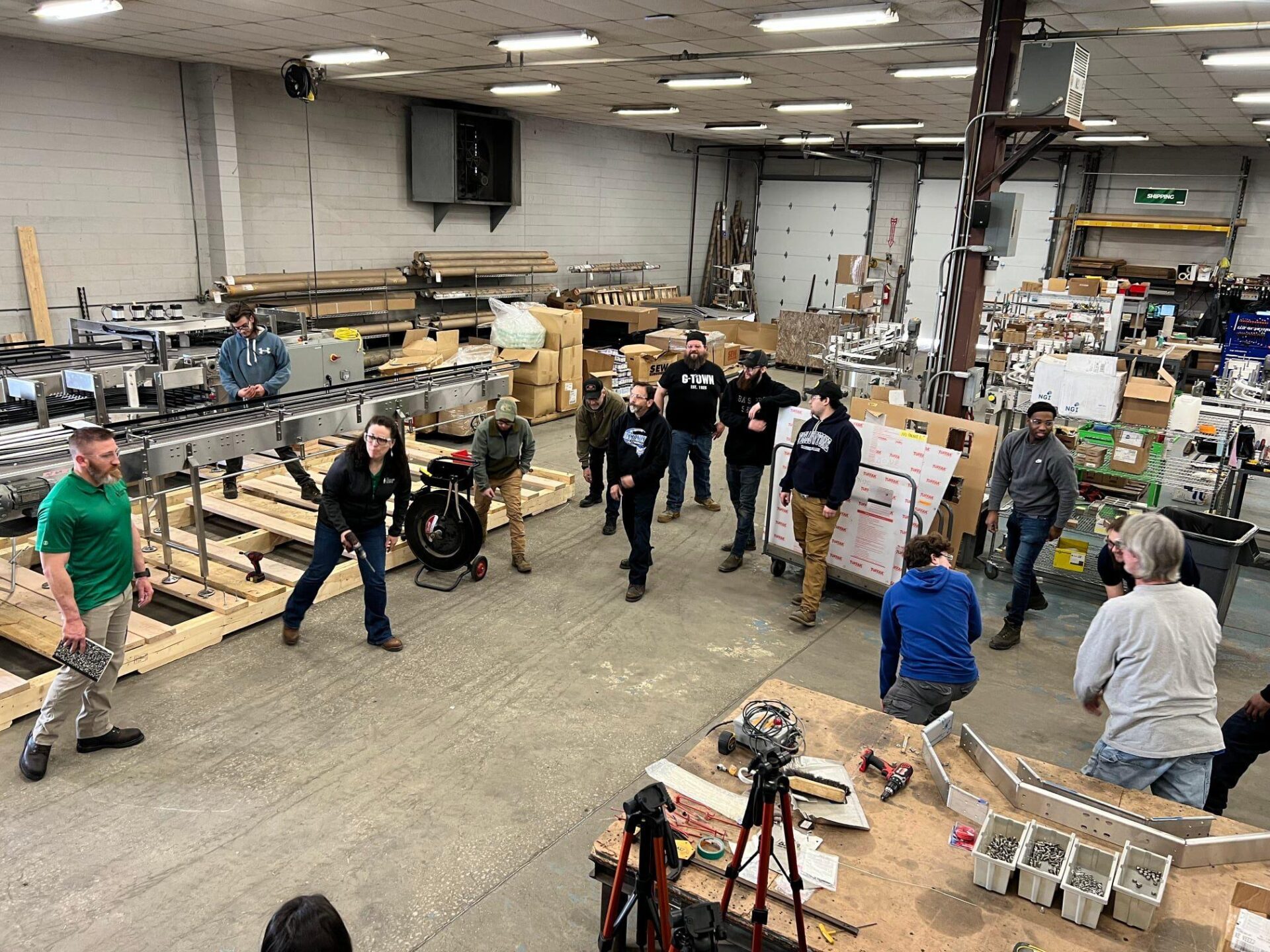Every job has hazards and challenges that can affect employee health and safety. The plant floor, for example, could have spills and broken glass from products that fall off the line. We have designed our accumulation systems with this in mind to minimize accidents and product damage on the floor.
For many plants, though, the most common causes of injury are related to ergonomics (or lack thereof). Many manufacturing workers perform repetitive motions and movements throughout the day, making them susceptible to injuries from fatigue and overexertion. These injuries are called musculoskeletal disorders (MSDs).
According to the CDC and Liberty Mutual, MSDs result in more than 70 million doctor visits annually and cost employers $13.4 billion annually. The most common work-related MSDs include muscle strains, hernia, back pain, and carpal tunnel syndrome,
We will explain how ergonomics can reduce MSDs in manufacturing and ways to implement ergonomics strategies in your facilities.
What Is Ergonomics?
Ergonomics focuses on workplace design and whether it fits a user’s needs. Employers can offer an environment that supports their movement and posture by considering how people perform their jobs. Productivity, morale, and efficiency soar, and employees suffer fewer injuries and discomfort.
How ergonomics is applied to a workstation depends on the type of work environment.
- In an office workstation, desks might be raised to adequately accommodate a user’s height so they don’t strain their back.
- Or there may be adjustable standing desks to encourage workers to move throughout the day and avoid the typical office sedentary lifestyle, a risk factor for various health issues.
But plant managers and supervisors will also need to consider the many jobs on the floor that aren’t behind a desk. They may have to implement ergonomics differently to address worker safety issues in an environment with a lot of bending, lifting, and repetitive motions.
H2: Five Ways to Improve Ergonomics in Manufacturing
Review Past Data to Make a Business Case
Before you consider ways to improve ergonomics, you need a baseline for measurement. Collect and review all workplace injury and safety performance data, like your DART and TRIR scores, to see where your company stands. This will help you make the business case for ergonomics improvements and measure success.
Ask Your Employees
An ergonomics strategy with buy-in from everyone can help ensure your employees are safe and comfortable performing their tasks. An easy way to ensure buy-in is through employee participation in planning. Encourage employees to speak up about their ergonomics issues and how they would improve their workstations.
Conduct Weekly Walkthroughs
After you have completed an initial assessment to prioritize tasks and workstations that pose an immediate risk, you can focus on areas that may not be so obvious to your team. Regular weekly walkthroughs allow you to identify these areas faster and see how improvements impact your employees in real-time.
Work on Form and Stretching
Our friends over at the Posture People stress the importance of prevention for reducing injuries and unnecessary strain on your workforce. At Garvey, we have added stretching routines and training on lifting correctly to help our employees avoid injuries and overexertion, reduce body strain, and improve flexibility.
We also provide lift-aid tools and equipment for heavy and strenuous lifting and stress the importance of breaks and rest in our onboarding and ongoing education programs.
Minimize the Impact of Repetition
Many MSDs result from the day-to-day grind of performing the same motions and movements. Explore ways to update tasks that involve repetitive motions to minimize their impact on workers. Breaks and job rotations are good starting points, but automation may also be an option depending on the task and facility.
Remember, Ergonomics Is an Ongoing Improvement
Implementing these and other ergonomics strategies may take time, and your ergonomics model will continuously improve as you assess your risk and measure your success. Over time, though, you should start to see the building blocks for a culture of ergonomics that prioritizes safety and comfort, strengthens trust between employees and supervisors, and benefits everyone.
Let us know how we can help you improve ergonomics in your plant by adding accumulation to your line.




